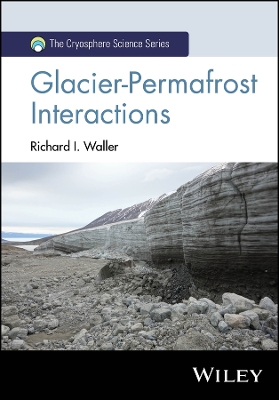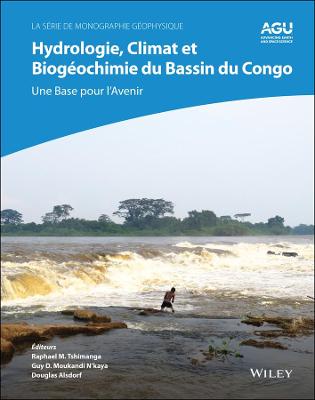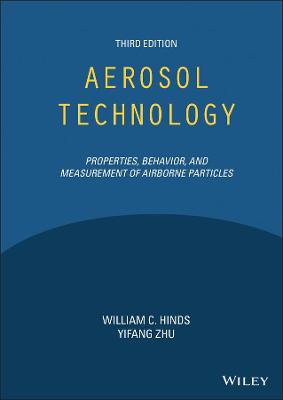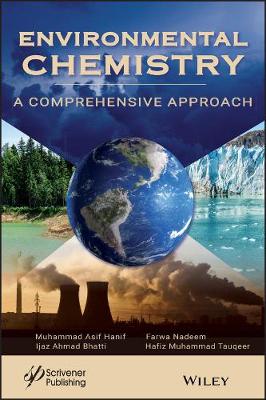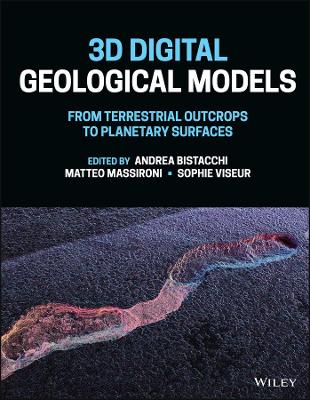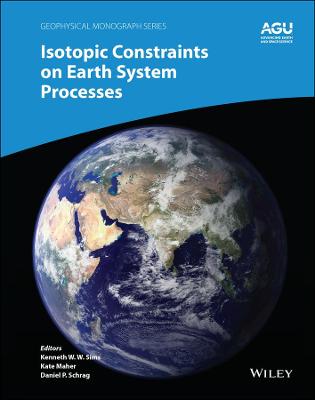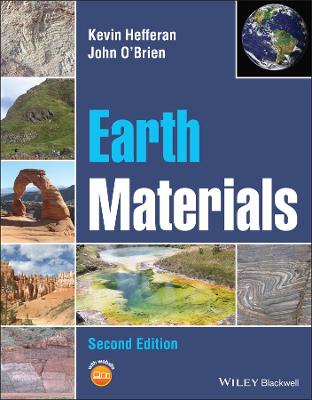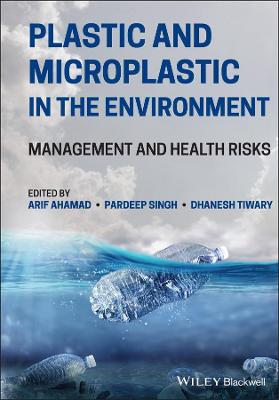Earth Environments
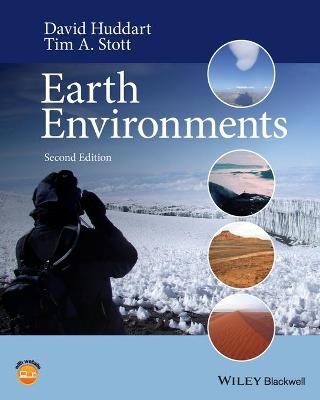 -15%
portes grátis
-15%
portes grátis
Earth Environments
Huddart, David; Stott, Tim A.
John Wiley and Sons Ltd
01/2020
1008
Mole
Inglês
9781119413257
15 a 20 dias
2110
Introduction xxv
Section I Introduction to Earth Systems 1
1 Introduction to Earth Systems 3
1.1 Introduction to Earth's Formation 4
1.2 Introduction to Earth Spheres 5
1.3 Scales in Space and Time 7
1.4 Systems and Feedback 8
1.5 Open and Closed Flow Systems 9
1.6 Equilibrium in Systems 11
1.7 Time Cycles in Systems 13
Section II Atmospheric and Ocean Systems 17
2 Structure and Composition of the Atmosphere 19
2.1 Structure of the Atmosphere 20
2.2 Composition of the Atmosphere 21
2.3 Carbon Dioxide and Methane 23
2.4 Water Vapour 24
3 Energy in the Atmosphere and the Earth Heat Budget 27
3.1 Introduction 28
3.2 Solar Radiation 28
4 Moisture in the Atmosphere 41
4.1 Introduction 42
4.2 The Global Hydrological Cycle 42
4.3 Air Stability and Instability 46
4.4 Clouds 48
4.5 Precipitation 49
5 Atmospheric Motion 55
5.1 Introduction 56
5.2 Atmospheric Pressure 56
5.3 Winds and Pressure Gradients 58
5.4 The Global Pattern of Atmospheric Circulation 62
6 Weather Systems 67
6.1 Introduction 68
6.2 Macroscale Synoptic Systems 68
6.3 Meso-Scale: local Winds 81
6.4 Microclimates 83
6.5 Weather Observation and Forecasting 89
7 World Climates 99
7.1 Introduction 100
7.2 Classification of Climate 100
8 Ocean Structure and Circulation Patterns 113
8.1 Introduction 114
8.2 Physical Structure of the Oceans 114
8.3 Temperature Structure of the Oceans 117
8.4 Ocean Circulation 117
8.5 Sea-Level Change 121
9 Atmospheric Evolution 125
9.1 Evolution of Earth's Atmosphere 126
10 Principles of Climate Change 131
10.1 Introduction 132
10.2 Evidence for Climate Change 133
10.3 Causes of Climate Change 145
Section III Endogenic Geological Systems 159
11 Earth Materials: Mineralogy, Rocks and the Rock Cycle 161
11.1 What is a Mineral? 162
11.2 Rocks and the Rock Cycle 173
11.3 Vulcanicity and Igneous Rocks 175
11.4 Sedimentary Rocks, Fossils and Sedimentary Structures 176
11.5 Metamorphic Rocks 187
12 The Internal Structure of the Earth 191
12.1 Introduction 192
12.2 Evidence of Earth's Composition from Drilling 192
12.3 Evidence of Earth's Composition from Volcanoes 193
12.4 Evidence of Earth's Composition from Meteorites 194
12.5 Using Earthquake Seismic Waves as Earth Probes 194
13 Plate Tectonics and Volcanism: Processes, Products, and Landforms 199
13.1 Introduction 200
13.2 Global Tectonics: how Plates, Basins, and Mountains are Created 200
13.3 Volcanic Processes and the Global Tectonic Model 204
13.4 Magma Eruption 215
13.5 Explosive Volcanism 220
13.6 Petrographic Features of Volcaniclastic Sediments 228
13.7 Transport and Deposition of Pyroclastic Materials 228
13.8 The Relationship Between Volcanic Processes and the Earth's Atmosphere and Climate 238
13.9 Plate Tectonics, Uniformitarianism and Earth History 245
14 Geotectonics: Processes, Structures, and Landforms 255
14.1 Introduction 256
14.2 Tectonic Structures 256
14.3 Tectonic Structures as Lines of Weakness in Landscape Evolution 263
Section IV Exogenic Geological Systems 265
15 Weathering Processes and Products 267
15.1 Introduction 268
15.2 Physical or Mechanical Weathering 270
15.3 Chemical Weathering 281
15.4 Measuring Weathering Rates 293
15.5 Weathering Landforms 295
16 Slope Processes and Morphology 299
16.1 Introduction 300
16.2 Slopes: Mass Movement 300
16.3 Hillslope Hydrology and Slope Processes 329
16.4 Slope Morphology and its Evolution 336
17 Fluvial Processes and Landform-Sediment Assemblages 349
17.1 Introduction 350
17.2 Loose Boundary Hydraulics 350
17.3 The Energy of a River and Its Ability to Do Work 353
17.4 Transport of the Sediment Load 353
17.5 Types of Sediment Load 355
17.6 River Hydrology 356
17.7 The Drainage Basin 358
17.8 Drainage Patterns and their Interpretation 362
17.9 Fluvial Channel Geomorphology 362
18 Carbonate Sedimentary Environments and Karst Processes and Landforms 411
18.1 Introduction 412
18.2 Carbonate Sedimentary Environments and Carbonate Rock Characteristics 412
18.3 Evaporites 430
18.4 Carbonate Facies Models 430
18.5 Karst Processes 435
19 Coastal Processes, Landforms, and Sediments 467
19.1 Introduction to the Coastal Zone 468
19.2 Sea Waves, Tides, and Tsunamis 470
19.3 Tides 476
19.4 Tsunamis 480
19.5 Coastal Landsystems 485
19.6 Distribution of Coastal Land systems 527
19.7 The Impact of Climatic Change on Coastal Landsystems: What Lies in the Future? 530
20 Glacial Processes and Land Systems 535
20.1 Introduction 536
20.2 Mass Balance and Glacier Formation 538
20.3 Mass Balance and Glacier Flow 546
20.4 Surging Glaciers 548
20.5 Processes of Glacial Erosion and Deposition 552
20.6 Glacial Landsystems 574
21 Periglacial Processes and Landform-Sediment Assemblages 605
21.1 Introduction to the Term 'Periglacial' 606
21.2 Permafrost 606
21.3 Periglacial Processes and Landforms 609
21.4 Frost Heaving and Frost Thrusting 612
21.5 Landforms Associated with Frost Sorting 614
21.6 Needle Ice Development 615
21.7 Frost Cracking and the Development of Ice Wedges 615
21.8 Growth of Ground Ice and Its Decay, and the Development of Pingos, Thufurs, and Palsas 620
21.9 Processes Associated with Snowbanks (Nivation Processes) 626
21.10 Cryoplanation or Altiplanation Processes and Their Resultant Landforms 628
21.11 The Development of Tors 633
21.12 Slope Processes Associated with the Short Summer Melt Season 638
21.13 Cambering and Associated Structures 645
21.14 Wind Action in a Periglacial Climate 645
21.15 Fluvial Processes in a Periglacial Environment 648
21.16 Alluvial Fans in a Periglacial Region 650
21.17 An Overview of the Importance of Periglacial Processes in Shaping the Landscape of Upland Britain 652
21.18 The Periglaciation of Lowland Britain 654
22 Aeolian (Wind) Processes and Landform-Sediment Assemblages 655
22.1 Introduction 656
22.2 Current Controls on Wind Systems 657
22.3 Sediment Entrainment and Processes of Sand Movement 657
22.4 Processes of Wind Transport 659
22.5 Aeolian Bedforms 661
22.6 Dune and Aeolian Sediments 677
22.7 Dust and Loess Deposition 678
22.8 Wind Erosion Landforms 682
Section V The Biosphere 687
23 Principles of Ecology and Biogeography 689
23.1 Introduction 690
23.2 Why Do Organisms Live Where They Do? 690
23.3 Components of Ecosystems 694
23.4 Energy Flow in Ecosystems 699
23.5 Food Chains and Webs 704
23.6 Pathways of Mineral Matter (Biogeochemical Cycling) 707
23.7 Vegetation Succession and Climaxes 714
23.8 Concluding Remarks 732
24 Soil-forming Processes and Products 733
24.1 Introduction 734
24.2 Controls on Soil Formation 735
24.3 Soils as Systems 738
24.4 Soil Profile Development 739
24.5 Soil Properties 744
24.6 Key Soil Types, with a Description and Typical Profile 752
24.7 Podsolization: Theories 756
24.8 Soil Classification 757
24.9 Regional and Local Soil Distribution 759
24.10 The Development of Dune Soils: An Example from the Sefton Coast 768
24.11 The Development of Woodland Soils in Delamere Forest 770
24.12 Intrazonal Soils Caused by Topographic Change 770
24.13 Palaeosols 771
25 World Ecosystems 775
25.1 Introduction 776
25.2 The Tundra Ecozone 778
25.3 The Tropical (Equatorial) Rain Forest, or Humid Tropics Sensu Stricto, Ecozone 786
25.4 The Seasonal Tropics or Savanna Ecozone 793
25.5 Potential Effects of Global Warming on the World's Ecozones 800
Section VI Global Environmental Change: Past, Present and Future 807
26 The Earth as a Planet: Geological Evolution and Change 809
26.1 Introduction 810
26.2 How Unique is the Earth as a Planet? 810
26.3 What Do We Really Know About the Early Earth? 811
26.4 The Early Geological Record 811
26.5 The First Earth System 815
26.6 How Did the Earth's Core Form? 817
26.7 Evolution of the Earth's Mantle 818
26.8 Evolution of the Continental Crust 827
27 Atmospheric Evolution and Climate Change 831
27.1 Evolution of Earth's Atmosphere 832
27.2 Future Climate Change 833
28 Future Change in Ocean Circulation and the Hydrosphere 843
28.1 Introduction 844
28.2 Sea-Level Change and the Supercontinental Cycle 844
28.3 Projected Long-Term Changes in the Ocean 849
28.4 Future Changes in the Water Cycle 850
29 Biosphere Evolution and Change 855
29.1 Introduction 856
29.2 Mechanisms of Evolution in the Fossil Record 856
29.3 The Origins of Life 860
29.4 An Outline History of the Earth's Biospheric Evolution 862
29.5 Mass Extinctions and Catastrophes in the History of Life on Earth 887
30 Environmental Change: Greenhouse and Icehouse Earth Phases and Climates Prior to Recent Changes 899
30.1 Introduction 900
30.2 Early Glaciations in the Proterozoic Phase of the Pre-Cambrian (the Snowball Earth Hypothesis) 900
30.3 Examples of Changes from Greenhouse to Icehouse Climates in the Earth's Past 908
30.4 Late Cenozoic Ice Ages: Rapid Climate Change in the Quaternary 922
30.5 Late Glacial Climates and Evidence for Rapid Change 932
30.6 The Medieval Warm Period (MWP) or Medieval Climate Optimum and the LIA 942
31 Global Environmental Change in the Future 951
31.1 Introduction 952
31.2 Future Climate Change 952
31.3 Change in the Geosphere 955
31.4 Change in the Oceans and Hydrosphere 958
31.5 Change in the Biosphere 959
31.6 A Timeline for Future Earth 960
31.7 Causes for Future Optimism? 961
31.8 Concluding Remarks 965
Index 967
Introduction xxv
Section I Introduction to Earth Systems 1
1 Introduction to Earth Systems 3
1.1 Introduction to Earth's Formation 4
1.2 Introduction to Earth Spheres 5
1.3 Scales in Space and Time 7
1.4 Systems and Feedback 8
1.5 Open and Closed Flow Systems 9
1.6 Equilibrium in Systems 11
1.7 Time Cycles in Systems 13
Section II Atmospheric and Ocean Systems 17
2 Structure and Composition of the Atmosphere 19
2.1 Structure of the Atmosphere 20
2.2 Composition of the Atmosphere 21
2.3 Carbon Dioxide and Methane 23
2.4 Water Vapour 24
3 Energy in the Atmosphere and the Earth Heat Budget 27
3.1 Introduction 28
3.2 Solar Radiation 28
4 Moisture in the Atmosphere 41
4.1 Introduction 42
4.2 The Global Hydrological Cycle 42
4.3 Air Stability and Instability 46
4.4 Clouds 48
4.5 Precipitation 49
5 Atmospheric Motion 55
5.1 Introduction 56
5.2 Atmospheric Pressure 56
5.3 Winds and Pressure Gradients 58
5.4 The Global Pattern of Atmospheric Circulation 62
6 Weather Systems 67
6.1 Introduction 68
6.2 Macroscale Synoptic Systems 68
6.3 Meso-Scale: local Winds 81
6.4 Microclimates 83
6.5 Weather Observation and Forecasting 89
7 World Climates 99
7.1 Introduction 100
7.2 Classification of Climate 100
8 Ocean Structure and Circulation Patterns 113
8.1 Introduction 114
8.2 Physical Structure of the Oceans 114
8.3 Temperature Structure of the Oceans 117
8.4 Ocean Circulation 117
8.5 Sea-Level Change 121
9 Atmospheric Evolution 125
9.1 Evolution of Earth's Atmosphere 126
10 Principles of Climate Change 131
10.1 Introduction 132
10.2 Evidence for Climate Change 133
10.3 Causes of Climate Change 145
Section III Endogenic Geological Systems 159
11 Earth Materials: Mineralogy, Rocks and the Rock Cycle 161
11.1 What is a Mineral? 162
11.2 Rocks and the Rock Cycle 173
11.3 Vulcanicity and Igneous Rocks 175
11.4 Sedimentary Rocks, Fossils and Sedimentary Structures 176
11.5 Metamorphic Rocks 187
12 The Internal Structure of the Earth 191
12.1 Introduction 192
12.2 Evidence of Earth's Composition from Drilling 192
12.3 Evidence of Earth's Composition from Volcanoes 193
12.4 Evidence of Earth's Composition from Meteorites 194
12.5 Using Earthquake Seismic Waves as Earth Probes 194
13 Plate Tectonics and Volcanism: Processes, Products, and Landforms 199
13.1 Introduction 200
13.2 Global Tectonics: how Plates, Basins, and Mountains are Created 200
13.3 Volcanic Processes and the Global Tectonic Model 204
13.4 Magma Eruption 215
13.5 Explosive Volcanism 220
13.6 Petrographic Features of Volcaniclastic Sediments 228
13.7 Transport and Deposition of Pyroclastic Materials 228
13.8 The Relationship Between Volcanic Processes and the Earth's Atmosphere and Climate 238
13.9 Plate Tectonics, Uniformitarianism and Earth History 245
14 Geotectonics: Processes, Structures, and Landforms 255
14.1 Introduction 256
14.2 Tectonic Structures 256
14.3 Tectonic Structures as Lines of Weakness in Landscape Evolution 263
Section IV Exogenic Geological Systems 265
15 Weathering Processes and Products 267
15.1 Introduction 268
15.2 Physical or Mechanical Weathering 270
15.3 Chemical Weathering 281
15.4 Measuring Weathering Rates 293
15.5 Weathering Landforms 295
16 Slope Processes and Morphology 299
16.1 Introduction 300
16.2 Slopes: Mass Movement 300
16.3 Hillslope Hydrology and Slope Processes 329
16.4 Slope Morphology and its Evolution 336
17 Fluvial Processes and Landform-Sediment Assemblages 349
17.1 Introduction 350
17.2 Loose Boundary Hydraulics 350
17.3 The Energy of a River and Its Ability to Do Work 353
17.4 Transport of the Sediment Load 353
17.5 Types of Sediment Load 355
17.6 River Hydrology 356
17.7 The Drainage Basin 358
17.8 Drainage Patterns and their Interpretation 362
17.9 Fluvial Channel Geomorphology 362
18 Carbonate Sedimentary Environments and Karst Processes and Landforms 411
18.1 Introduction 412
18.2 Carbonate Sedimentary Environments and Carbonate Rock Characteristics 412
18.3 Evaporites 430
18.4 Carbonate Facies Models 430
18.5 Karst Processes 435
19 Coastal Processes, Landforms, and Sediments 467
19.1 Introduction to the Coastal Zone 468
19.2 Sea Waves, Tides, and Tsunamis 470
19.3 Tides 476
19.4 Tsunamis 480
19.5 Coastal Landsystems 485
19.6 Distribution of Coastal Land systems 527
19.7 The Impact of Climatic Change on Coastal Landsystems: What Lies in the Future? 530
20 Glacial Processes and Land Systems 535
20.1 Introduction 536
20.2 Mass Balance and Glacier Formation 538
20.3 Mass Balance and Glacier Flow 546
20.4 Surging Glaciers 548
20.5 Processes of Glacial Erosion and Deposition 552
20.6 Glacial Landsystems 574
21 Periglacial Processes and Landform-Sediment Assemblages 605
21.1 Introduction to the Term 'Periglacial' 606
21.2 Permafrost 606
21.3 Periglacial Processes and Landforms 609
21.4 Frost Heaving and Frost Thrusting 612
21.5 Landforms Associated with Frost Sorting 614
21.6 Needle Ice Development 615
21.7 Frost Cracking and the Development of Ice Wedges 615
21.8 Growth of Ground Ice and Its Decay, and the Development of Pingos, Thufurs, and Palsas 620
21.9 Processes Associated with Snowbanks (Nivation Processes) 626
21.10 Cryoplanation or Altiplanation Processes and Their Resultant Landforms 628
21.11 The Development of Tors 633
21.12 Slope Processes Associated with the Short Summer Melt Season 638
21.13 Cambering and Associated Structures 645
21.14 Wind Action in a Periglacial Climate 645
21.15 Fluvial Processes in a Periglacial Environment 648
21.16 Alluvial Fans in a Periglacial Region 650
21.17 An Overview of the Importance of Periglacial Processes in Shaping the Landscape of Upland Britain 652
21.18 The Periglaciation of Lowland Britain 654
22 Aeolian (Wind) Processes and Landform-Sediment Assemblages 655
22.1 Introduction 656
22.2 Current Controls on Wind Systems 657
22.3 Sediment Entrainment and Processes of Sand Movement 657
22.4 Processes of Wind Transport 659
22.5 Aeolian Bedforms 661
22.6 Dune and Aeolian Sediments 677
22.7 Dust and Loess Deposition 678
22.8 Wind Erosion Landforms 682
Section V The Biosphere 687
23 Principles of Ecology and Biogeography 689
23.1 Introduction 690
23.2 Why Do Organisms Live Where They Do? 690
23.3 Components of Ecosystems 694
23.4 Energy Flow in Ecosystems 699
23.5 Food Chains and Webs 704
23.6 Pathways of Mineral Matter (Biogeochemical Cycling) 707
23.7 Vegetation Succession and Climaxes 714
23.8 Concluding Remarks 732
24 Soil-forming Processes and Products 733
24.1 Introduction 734
24.2 Controls on Soil Formation 735
24.3 Soils as Systems 738
24.4 Soil Profile Development 739
24.5 Soil Properties 744
24.6 Key Soil Types, with a Description and Typical Profile 752
24.7 Podsolization: Theories 756
24.8 Soil Classification 757
24.9 Regional and Local Soil Distribution 759
24.10 The Development of Dune Soils: An Example from the Sefton Coast 768
24.11 The Development of Woodland Soils in Delamere Forest 770
24.12 Intrazonal Soils Caused by Topographic Change 770
24.13 Palaeosols 771
25 World Ecosystems 775
25.1 Introduction 776
25.2 The Tundra Ecozone 778
25.3 The Tropical (Equatorial) Rain Forest, or Humid Tropics Sensu Stricto, Ecozone 786
25.4 The Seasonal Tropics or Savanna Ecozone 793
25.5 Potential Effects of Global Warming on the World's Ecozones 800
Section VI Global Environmental Change: Past, Present and Future 807
26 The Earth as a Planet: Geological Evolution and Change 809
26.1 Introduction 810
26.2 How Unique is the Earth as a Planet? 810
26.3 What Do We Really Know About the Early Earth? 811
26.4 The Early Geological Record 811
26.5 The First Earth System 815
26.6 How Did the Earth's Core Form? 817
26.7 Evolution of the Earth's Mantle 818
26.8 Evolution of the Continental Crust 827
27 Atmospheric Evolution and Climate Change 831
27.1 Evolution of Earth's Atmosphere 832
27.2 Future Climate Change 833
28 Future Change in Ocean Circulation and the Hydrosphere 843
28.1 Introduction 844
28.2 Sea-Level Change and the Supercontinental Cycle 844
28.3 Projected Long-Term Changes in the Ocean 849
28.4 Future Changes in the Water Cycle 850
29 Biosphere Evolution and Change 855
29.1 Introduction 856
29.2 Mechanisms of Evolution in the Fossil Record 856
29.3 The Origins of Life 860
29.4 An Outline History of the Earth's Biospheric Evolution 862
29.5 Mass Extinctions and Catastrophes in the History of Life on Earth 887
30 Environmental Change: Greenhouse and Icehouse Earth Phases and Climates Prior to Recent Changes 899
30.1 Introduction 900
30.2 Early Glaciations in the Proterozoic Phase of the Pre-Cambrian (the Snowball Earth Hypothesis) 900
30.3 Examples of Changes from Greenhouse to Icehouse Climates in the Earth's Past 908
30.4 Late Cenozoic Ice Ages: Rapid Climate Change in the Quaternary 922
30.5 Late Glacial Climates and Evidence for Rapid Change 932
30.6 The Medieval Warm Period (MWP) or Medieval Climate Optimum and the LIA 942
31 Global Environmental Change in the Future 951
31.1 Introduction 952
31.2 Future Climate Change 952
31.3 Change in the Geosphere 955
31.4 Change in the Oceans and Hydrosphere 958
31.5 Change in the Biosphere 959
31.6 A Timeline for Future Earth 960
31.7 Causes for Future Optimism? 961
31.8 Concluding Remarks 965
Index 967



